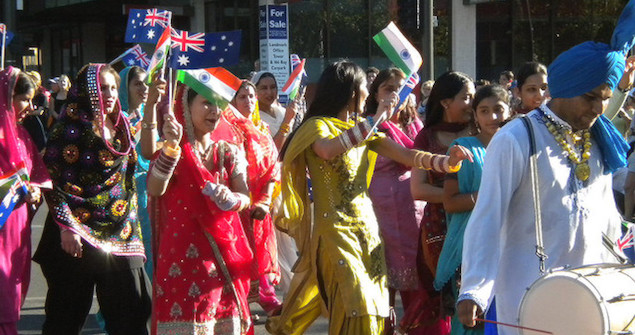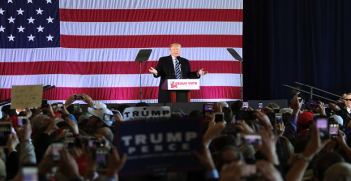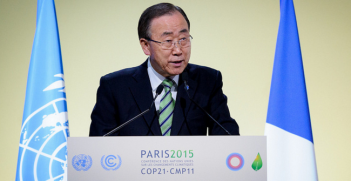A Tale of Two National Holidays

While 26 January is an important national holiday in both India and Australia, the events and conversations marking this year’s occasions could not have been more different.
For an Australian of Indian origin, 26 January is a double holiday, celebrated as important national occasions in both countries. The contrast could hardly have been more stark between the events to mark the occasions, and the resulting national conversations, in the two countries this year.
Australians celebrate 26 January as Australia Day to mark the settlement of the continent by Europeans. A year ago, to general bemusement, considerable bewilderment and some hostility, prime minister Tony Abbott (without forewarning) revived the custom of doling out knighthoods and damehoods. Most Australians believed the nation had moved well and truly beyond the trappings of empire in favour of our own rungs of recognition: Australian titles for Australian worthies.
Abbott promised then that the British-derived recognition would be limited to a very few select Australians. Now he has announced, to general astonishment, considerable fury and some derision (especially on social media) that Prince Phillip, the Queen’s consort, has been made an Australian Knight.
America, the most powerful ex-colony of all, in the empire on which the sun never set, broke away after a bloody revolution in the 18th century. Its president traces ancestry jointly from America and from another former UK colony in Africa. The jewel in the British Empire became independent in 1947, setting off an unstoppable wave of decolonisation that led to the complete dissolution of the empire. Having done so, in 1950 independent India adopted a new constitution following America’s example in rejecting a monarchical system in favour of a republic. 26 January is celebrated as Republic Day with all the pomp and pageantry that one associates with India.
Moreover, on each Republic Day, the government carefully chooses a foreign dignitary as the guest of honour and quite a few illustrious names make up the honour roll. This year’s chief guest was US president Barack Obama.
His three-day visit to India is likely to prove the more momentous for shaping even Australia’s future (as well as Japan’s, the other US ally in Asia-Pacific) than Abbott’s whimsical award of antiquated knighthoods. The Obama visit was as deep in symbolism as it was substantial in concrete deliverables, setting the stage for a transformative up-shift of the bilateral relationship from Cold War-era “estranged democracies” to “engaged allies” of this century, if without a formal alliance pact.
The leader of the world’s most populous democracy welcomed the leader of the world’s most powerful democracy. Obama was the first US president to be the chief guest for this peak national celebration, the only US president to visit India twice while in office, and the first Republic Day chief guest under Prime Minister Narendra Modi (a politician who had been conspicuously denied entry to America for a decade while under general Western ostracism). Indeed Modia broke from protocol to greet Obama at the airport in person. And the display of India’s military might, even though it pales into insignificance besides the bristling US military arsenal, included major Russian-sourced tanks and fighter jets.
The centrepiece of the outcomes of the visit was the decision to overcome the hurdles that had stalled the last historic breakthrough, the bilateral civil nuclear cooperation deal. President George W Bush first reversed long-standing nuclear isolation of India to launch negotiations on a deal in July 2005 to conclude and sign in October 2008. This was quickly followed by a new safeguards agreement with the International Atomic Energy Agency (IAEA) and an India-specific waiver by the Nuclear Suppliers Group (established in response to India’s first nuclear test back in 1974) in August-September 2008.
But in August 2010, India passed a stringent Civil Liability for Nuclear Damages law permitting the operator of a nuclear power reactor to sue the supplier in case of an accident. Indian, US and other foreign companies objected strongly to this and no supply agreement has been signed as a result. Now India, while keeping the law, has agreed to set up an insurance pool from domestic sources and to provide a legal memorandum exempting suppliers from general tort claims – a market-based and innovative solution to a seven-year impasse. The fine print on this is still to be worked through but, given the highest level political engagement, presumably a legally watertight document will be concluded. For its part, Washington has dropped demands for US tracking of US-supplied equipment and materials on top of IAEA inspections.
In addition, the Delhi Declaration of Friendship envisions more frequent high-level exchanges, while a Joint Strategic Vision for Asia-Pacific and the Indian Ocean region puts Washington’s seal of approval on India’s new willingness to be visibly active in a security role in Australia’s and Japan’s home region. They will cooperate in defence production under a renewed ten-year framework agreement in countering terrorism and piracy, as well as on clean energy, climate change (although a deal comparable to the US-China agreement proved too elusive), trade and intellectual property rights and other benchmarks.
In other words Modi has placed India’s bet on Washington being crucial to India’s future growth and development as a market, a source of investment capital and credit, technology, and defence supplies. Obama has bet on India’s continuing rise and the partnership that, if consolidated and properly managed rather than being consigned to reciprocal benign neglect, will help both to adjust to and indeed shape the emerging multipolar order in Asia and the world. The bonhomie will revert to suspicion if Washington foresees a pliant client-state ally, or if the Indian elite succumbs to habitual suspicion of US motives and intentions. They should cooperate where they can and be mutually respectful of differing priorities where policies diverge, not lecture each other reproachfully.
Both political cultures are guilty of self-justifying rectitude that grates on others; both executives are hostage to multiple points of opposition as well as equally noisy and boisterous democracies; but both are also capable of articulating inspiring visions and mobilising national will to realise them. The role of the three million-strong, politically organised and savvy Indian diaspora in the US (increasingly affluent and influential in the domestic US political jostling) will be especially critical in providing ballast to, and intermediating, New Delhi-Washington differences. India’s geopolitical weight and its critical role in promoting common strategic goals may not yet have registered on mainstream US media consciousness. It should on the Australian and Japanese.
Ramesh Thakur is professor in the Crawford School of Public Policy, Australian National University. This article can be republished with attribution under a Creative Commons Licence.





